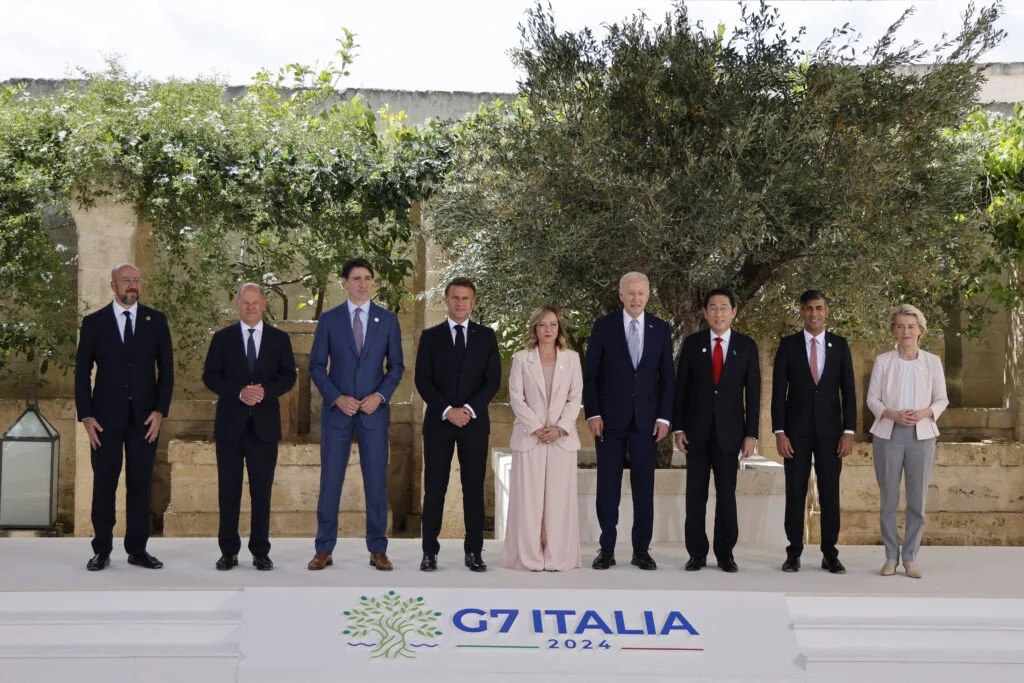Brussels – The EU made the first disbursement under the G7 loan to Ukraine, which will be repaid with interest on immobilized Russian assets today (Jan. 10). Three billion euros will end in Kyiv’s state coffers, the first tranche of the Old Continent’s contribution, which is expected to provide another 15 billion by the end of the year.
As announced in a statement by the EU executive, the Commission today wrote the first check for Ukraine under the instrument for macro-financial assistance to the former Soviet republic (MFA), endowed with approximately 18.1 billion to be disbursed over the course of 2025.
This is the share that Brussels has pledged to do contribute to the maxi loan of €45 billion ($50 billion) agreed last summer in Puglia during Italy’s G7 presidency. The figure to be mobilized in Europe is well below the ceiling of 35 billion set last September by the chairwoman of the EU executive, Ursula von der Leyen.

The key feature of this exceptional loan is how it will be repaid: Kyiv will not have to contribute the necessary resources, thus being exempt from onerous repayments. Instead, the loan will be secured by the extraordinary profits from immobilized Russian assets collected through the Cooperation Mechanism for Loans to Ukraine (ULCM).
Today’s tranche (the disbursement of which was formally authorized by the Commission last December) is 3 billion, which will go to support the attacked country’s “current and future military, budgetary, and reconstruction needs” to “ensure macroeconomic stability and restore critical infrastructure destroyed by Russia,” as the Berlaymont memo states.
The next scheduled MFA disbursements are expected between March and November. They should total 1 billion per month (for a total of 9 billion). The remaining 6 billion should arrive in Ukrainian coffers by December.
“Every day, for over a thousand days, Russia has been destroying Ukrainians’ homes and deliberately targeting critical infrastructure, including energy supplies,” said High Representative for Foreign Policy Kaja Kallas, who was in Rome today for the ministerial G7 meeting on Syria, where she met with both Prime Minister Giorgia Meloni and Foreign Minister Antonio Tajani, as well as Defense Minister Guido Crosetto. “Russia started this war and must pay the price,” she added.
It is always a pleasure to return to Italy!
.
A very constructive meeting with Prime Minister @GiorgiaMeloniEurope has a lot of challenges ahead and by working together we are stronger. pic.twitter.com/yEhlnXaqmC
– Kaja Kallas (@kajakallas) January 10, 2025
These resources are in addition to the long-term funding that the EU provides to Kyiv through the Ukraine Facility, whose allocation is set at 50 billion for the period 2024–2027 (when the current multi-year EU budget expires). Since the beginning of Russia’s large-scale invasion in February 2022, almost 134 billion in military, humanitarian, and financial assistance has come to Ukraine from the EU and member states.
The Commission estimates that the Russian Central Bank’s assets frozen in the jurisdictions of the Twenty-Seven are around 210 billion. These assets account for most of the Russian assets immobilized globally by Ukraine’s allies, while interest-generated profits would be between 2.5 and 3 billion per year.
English version by the Translation Service of Withub






